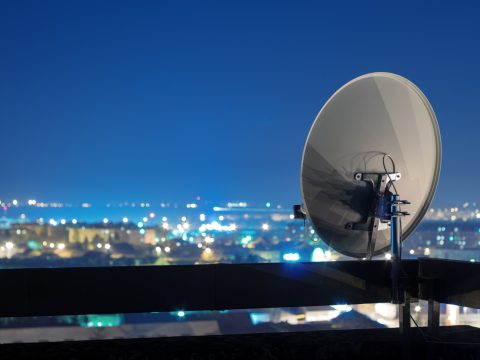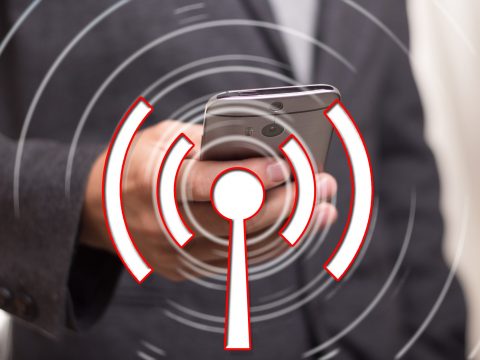Signal Received! Everything You Need to Know About Antennas and Satellite Communications

Precision Machining 101: Precision Machinery and its Advantages
November 18, 2019
The Different Types of Wireless Communication
January 8, 2020On October 4, 1957, the Soviet Union launched the first artificial space satellite, Sputnik. This marked the beginning of the space race. It also marked the beginning of satellite communications.
Sputnik only orbited for three weeks before its battery died–but its one and only message had been delivered: this will be the future of communications.
Approximately 1,100 active satellites are orbiting the Earth today (another 2,600 or so are defunct). Only about 60% of the active satellites are communications satellites, though.
In this article, we’ll explain how communications satellites operate, what they’re used for, and how they send and receive messages to and from Earth.
How Does Satellite Communication Work?
At the most basic level, a satellite could be a moon, planet or machine that orbits a planet or star. Our moon is a natural satellite.
The artificial satellites discussed above are what we’ll focus on in the rest of this article, though, so we’ll refer to them simply as “satellites” from this point.
Most satellites are launched by rockets and remain in space. “A satellite orbits Earth when its speed is balanced by the pull of the planet’s gravity. Without this balance, the satellite would fly in a straight line off into space or fall back to Earth.”
Some people characterize a satellite as an “antenna in space.” This is partly true–though we’d say it’s the base for clusters of antennas connected to equipment that processes their signals.
Communications satellites are in continuous geosynchronous orbit 23,000 miles above the Earth, all the while sending and receiving various types of information. “Geosynchronous” means they follow the earth’s orbit as if in a static position.
Key Components of a Satellite
Satellites come in an array of different sizes and configurations depending on age, purpose, manufacturer, and other factors. The main parts of a satellite are as follows:
Housing
This is the very strong, protective covering (or shell) of the main part of the satellite. It holds several of the key components. The following are located inside the housing.
- Command and Data Handling: These important components monitor every aspect of the satellite, receiving and acting on operational commands from Earth.
- Thermal Control: These components guard against extreme changes in temperature.
- Transponders: These convert signals sent and received from satellite receiving dishes (antennas) on Earth–which will be discussed below.
Guidance and Stabilization
These are sensors that monitor the satellite’s position to ensure it remains in the correct orbit and is oriented toward the correct target on Earth. They use thrusters to adjust the satellite’s position slightly when necessary.
Solar Array
These are photovoltaic panels that collect sunlight to generate energy. They are the power source for most satellites today, assisted by rechargeable batteries in case of a solar eclipse.
Antennas
Antennas, along with transponders, are the key to satellite communications. Antennas affixed to satellites are, by necessity, used for both receiving and sending signals.
Antennas on the satellite receive signals uplinked (transmitted) from various sources on Earth. The signals are then processed by a transponder and sent back to the earth station for redistribution.
Satellite Earth Station (Receiving Dish)
One major function of a satellite earth station (or ground station) is serving as a point-to-point means of communicating directly with a satellite. The other major function is transmitting information received from the satellite to other locations on earth.
Satellite Frequencies and Antenna Types
Satellite frequencies, which fall within the 1-75 GHz range of the electromagnetic spectrum, include the following bands:
- L-band (1-2 GHz): GPS
- C-band (4-8 GHz): full-time satellite TV networks or raw satellite feeds
- X-band (8-12 GHz): primarily military uses
- Ku-Band (12-18 GHz: satellite communications, especially direct-to-home (DTH) television, mobile telephony, data
- Ka-band (26-40 GHz): satellite communications (including DTH television), mobile telephony, data, some military use
- V-band (40-75 GHz)
There is a wide variety of satellite antenna types (sometimes custom-fabricated). The most common type, though is a parabolic reflector antenna (a paraboloid of revolution, to be more specific).
A horn antenna is used for full Earth coverage from a geostationary satellite. These have an unusual shape, which makes them recognizable when attached to satellites, Horn antennas are also used as feeds to augment the functioning of reflector antennas.
Common Uses for Communication Satellites
Although we only have room in this article to cover a couple of common uses for satellite communications, there are many more out there–in fact, an infinite number. New uses arise every day it seems, each competing for spectrum space.
The young cable television (known as community antenna television or CATV) was one of the first private industries to explore the potential of satellites in the early 1970s, greatly broadening the scale of what had been only a retransmission service for small towns and rural areas.
Non-Broadcast Television
Since then, cable networks have used uplinking equipment to send signals for their programming up to the satellite, Those signals are then assigned new frequencies and downlinked to cable systems within its “footprint” (reception area).
Satellite cable began in the mid-1970s. Pioneers in this effort include Time-Warner’s Gerald Levin, televangelist Pat Robertson, and the infamous Ted Turner, along with several other, at the time, up and coming cable television magnates.
Since the mid-1990s, direct-to-home (DTH) television has used other bands (Ka- and Ku-bands as opposed to C-band) to bypass cable service altogether. Instead, many customers now use small home-receiving dishes (antennas) for television service.
GPS (Global Positioning Systems)
There are 31 active GPS satellites in orbit (operating on frequencies in the L-band). They use a process of “trilateration” to determine someone’s position on Earth. A person is likely to be within the “sight” of at least three at any given time and location.
A GPS receiver will use a correlation of time and distance provided by the satellites to determine your location. The receiver can determine someone’s position in three dimensions – east, north, and altitude.
If the existing calculations might not be fully accurate, sometimes a fourth satellite is in range and can confirm them.
Satellite Communications Revisited
It’s been just over six decades since Sputnik was launched. Look at what’s happened in the world of satellites and satellite antennas since then!
What will satellite communications be like in the future? And will they continue to intersect or compete more with rapidly-proliferating Internet-based technologies like streaming video?
And what will we do about “space garbage” created by non-functional satellites?
Regardless of these and other concerns, satellites have brought us many conveniences we wouldn’t have had otherwise, and we’re happy for that–especially since we make some excellent antennas for them.
If you’re interested in one of our satellite antennas or another type of antenna, let us know. We’ll be happy to hear about what you need!




